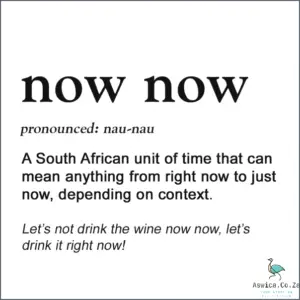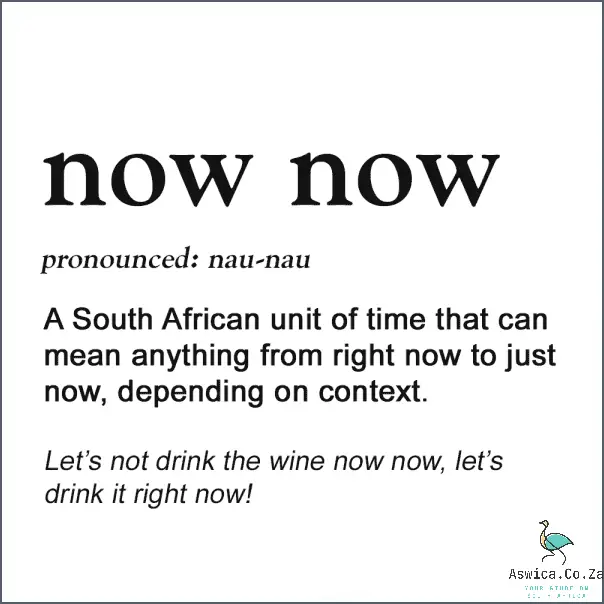
Cape Coloured Slang Phrases are a type of slang used by people of Cape Coloured descent. This type of slang is a mix of English and Afrikaans, and often uses words that are not found in either language. Cape Coloured Slang Phrases are used by people of all ages, but are most commonly used by young people.
Contents
Cape Coloured Slang Phrases
Cape Coloured Slang phrases are a unique form of communication used by the Coloured population of South Africa. It is a colourful mix of English, Afrikaans, Portuguese and other languages. Common phrases include "Kwagga", which is used to describe someone or something being cool or awesome, and "Klap", which is used to express disbelief. Cape Coloured slang also includes terms like "Kief", which is used to describe something that is interesting or unique, and "Pappas", which is used to describe someone who is lazy. Cape Coloured slang is an important part of the culture of the Coloured people of South Africa, and is a unique way of expressing yourself.
Origins of Cape Coloured Slang
Cape Coloured Slang has its origins in the diverse culture of the Cape Flats in the Western Cape of South Africa. This is an area that has been home to many diverse ethnic and linguistic groups over the centuries, including the Afrikaans, Khoisan, Coloured, and Malay populations. This mix of cultures has produced an incredibly rich and vibrant culture, which is reflected in the language used in the area.
Cape Coloured Slang is a blend of various languages and dialects, including English, Afrikaans, Khoisan, and Malay. This blend is often referred to as ‘Cape Flats English’, a unique dialect that is used by many of the locals. The slang is heavily influenced by Afrikaans and incorporates many words from the Khoisan and Malay languages.
The slang is often seen as a form of identity and expression for the locals, and is used to express emotions, feelings and ideas that would otherwise be difficult to express in English. The slang is often used in a humorous way and is often seen as an integral part of the local culture.
Many of the slang words and phrases are based on the Afrikaans language, and are often used to express sentiments that are difficult to express in English. For example, the phrase ‘kyk wat nou gebeur’ which translates to ‘look what’s happening now’ is often used to express shock or surprise. The phrase ‘skaam kat’ which translates to ‘shy cat’ is often used to express embarrassment or shame.

The slang is also heavily influenced by the Khoisan and Malay languages, which have also contributed to the mix of languages spoken in the area. The words ‘mekaar’ and ‘mekaar-kom’ are derived from the Khoisan language and are often used to express agreement or understanding. Similarly, the Malay word ‘sabar’ is often used to express patience or tolerance.
Cape Coloured Slang has evolved over time, and continues to be an integral part of the culture of the area. It is a unique and vibrant expression of the diversity of the Cape Flats, and is a reflection of its multicultural heritage.
Examples of Common Cape Coloured Slang Phrases
Cape Coloured Slang is a unique dialect that has developed over the years in the Cape Flats region located in the Western Cape of South Africa. Its origins are rooted in the Afrikaans language, which is spoken by the majority of the local population. This dialect has become a source of pride for many locals, and has even been adopted by some celebrities. The slang is often used to express a range of emotions and is sometimes used to playfully tease one another. To get a better understanding of the language, here are some examples of common Cape Coloured Slang phrases.
One of the most iconic phrases used by locals is ‘Yissus’. This is an expression of surprise, joy, or agreement. It is used in a light-hearted manner and is often accompanied by a smile. Another commonly used phrase is ‘Gatvol’. This is used to express frustration, annoyance, or exhaustion.
The phrase ‘Tjap’ is used to describe something that is cool or impressive. It is often used to describe a person or situation. The phrase ‘Kak’ is used to describe something that is unpleasant or bad. It is used more frequently than its opposite ‘Tjap’.
A phrase that is often used in a playful way is ‘Klei’. This phrase can be used to describe something that is funny or silly. It is often used when teasing one another. The phrase ‘Klop’ is used to describe something that is wrong or incorrect.
Finally, the phrase ‘Gatvol’ is used to express extreme annoyance or frustration. This phrase is often used in a humorous way to indicate that the speaker is fed up with a situation.

These are just a few of the many Cape Coloured Slang phrases that can be heard in the Western Cape. Each phrase has its own unique meaning and should be used in the appropriate context. The dialect is a source of pride for many locals and is used to express a range of emotions. It is a unique form of communication that has been passed down through generations and is sure to remain a part of the region’s culture for years to come.
The Different Uses of Cape Coloured Slang
Cape Coloured Slang is a unique and vibrant language spoken by the people of the Cape Flats, a predominantly Coloured neighbourhood in Cape Town, South Africa. This dialect has its roots in the Afrikaans language and is highly influenced by English and other African languages. It is a blend of traditional Cape Coloured language, English, and many other African languages, making it a truly unique dialect.
Cape Coloured Slang is often used to express oneself in a humorous and laid-back way. It is also used to communicate in an informal and relaxed manner. It is a dialect that is filled with colourful and playful phrases that can often be used to lighten the mood or to express an opinion.
Cape Coloured Slang is also used to express feelings of frustration or disappointment. Phrases such as "Bont" (angry) and "Dik-dik" (annoyed) are often used to express displeasure. It is also used to express admiration and to express appreciation for something. Phrases such as "Dik-lief" (lovely) and "Gemaklik" (relaxed) are often used in this way.
Cape Coloured Slang is also used to convey messages in a subtle way. It can be used to express disapproval without coming across as aggressive or hostile. Phrases such as "Gaan staan" (stand up) and "Kom kom" (come on) are often used in this way.
Cape Coloured Slang is also used to emphasize words and phrases. It is used to add emphasis to a point or to make a statement more memorable. Words such as "Baie" (very) and "Baas" (boss) are often used in this way.
Overall, Cape Coloured Slang is a unique and vibrant dialect that is full of colourful and playful phrases. It is a dialect that is often used to express oneself in a humorous and laid-back way. It is also used to communicate in an informal and relaxed manner, to express feelings of frustration or disappointment, and to emphasize words and phrases.
Conclusion
Cape Coloured Slang Phrases is a fascinating document that provides a window into the linguistic diversity of the Cape Coloured community. The slang terms provide a unique and humorous perspective on the community and its culture. The document is a valuable resource for students and researchers interested in Cape Coloured culture and language.




